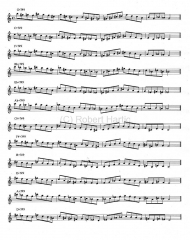Just about any way you look at it, the 2011 tornado season has been exceptional, disastrous, spectacular, and heartbreaking. On April 25–28, the largest tornado outbreak in United States history claimed over 340 lives over a span of 78 1/2 hours. Hardest hit was northern Alabama, where 239 of the fatalities occurred. Of the 335 confirmed tornadoes that drilled across 21 states from Texas and Oklahoma to as far north as upstate New York, four received an EF-5 rating, a figure surpassed only by the 1974 Super Outbreak. In other ways, what is now known as the 2011 Super Outbreak rivaled its infamous predecessor of 37 years ago. There were more tornadoes. And, in an age when warning technology and communications far outstrips what existed on April 3–4, 1974, there were nevertheless more deaths.
The 2011 Super Outbreak alone would have set the year apart as a mile marker in weather history. But less than a month later, on May 22, another longstanding record got broken–and tornado records are rarely anything one hopes to see beaten. In this case, a mile-wide EF-5 wedge that leveled Joplin, Missouri, became not only the first single tornado since the 1953 Flint–Beecher, Michigan, tornado to kill over 100 people, but also, with a death toll of 153, the deadliest US tornado since the Woodward, Oklahoma, tornado of 1943.
This has been a year when large cities have gotten smeared, churned into toothpicks and spit out at 200 mph. Tusacaloosa, Birmingham, Huntsville, Joplin…if you survived the storms that trashed these towns, you were blessed. And chances are, you know people who weren’t so fortunate.
Rarely has the dark side of the storms that storm chasers so passionately pursue been on such grim and devastating display. This has been an awful tornado season, and that’s the truth. It has also been a spectacular one, and if many of the storms were man eaters, yet many others spun out their violent beauty harmlessly out on the open plains. Chasers this year have witnessed the full gamut, from April’s deadly monsters that raced across Dixie Alley to slow-moving, late-season funnels that meandered grandly over the grasslands.
For me, the season has largely been a washout. Family and economic constraints kept me mostly benched this spring, and the few times when I made it out west to chase were unproductive.
Not so, however, with my friend and chase partner of 15 years, Bill Oosterbaan. Bill has had a spectacular and a sobering season–and in this first-ever Stormhorn.com video interview, he’s here to talk about it.
The 40-minute length of this video requires that it be broken into four sections in order to fit YouTube requirements. It’s a lengthy process, and me being a novice at video editing–particularly with high definition–it has taken me a while to figure out how to make it work. This evening I finally had a breakthrough, and now I’m pleased to say that Part 1 is available for viewing. I will be working on the remaining three parts tomorrow, and I hope to have them available in their entirety on YouTube by Wednesday. [UPDATE: Parts 2–4 are now available for viewing.]
For now, by way of a teaser with some substance to it, here is the first part.


